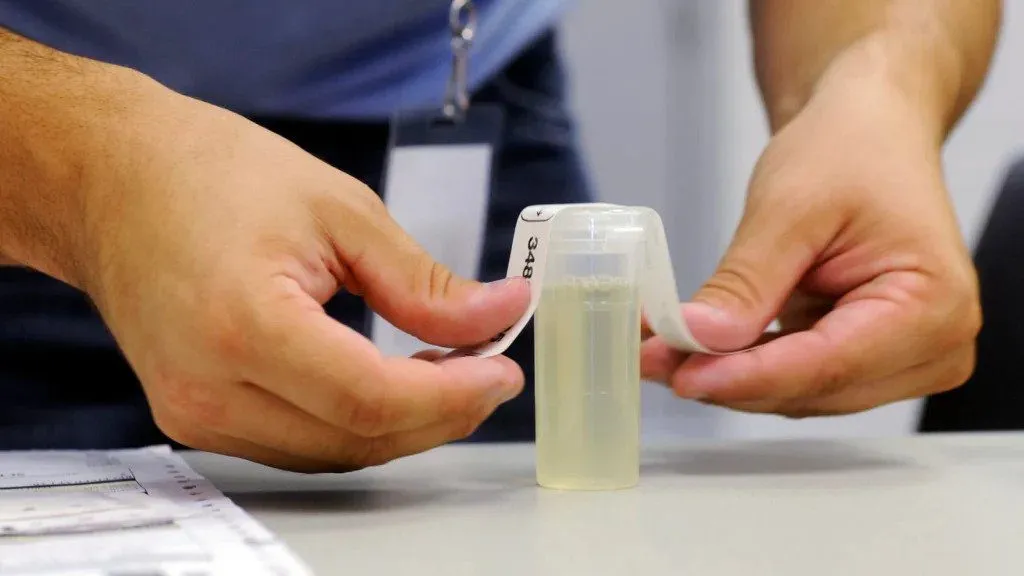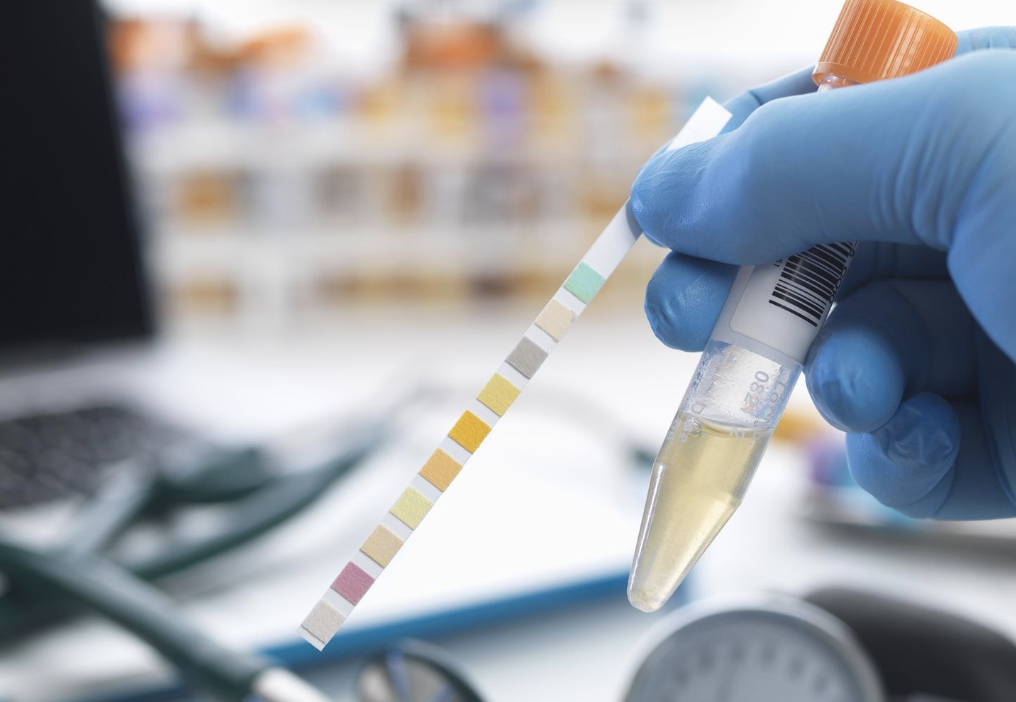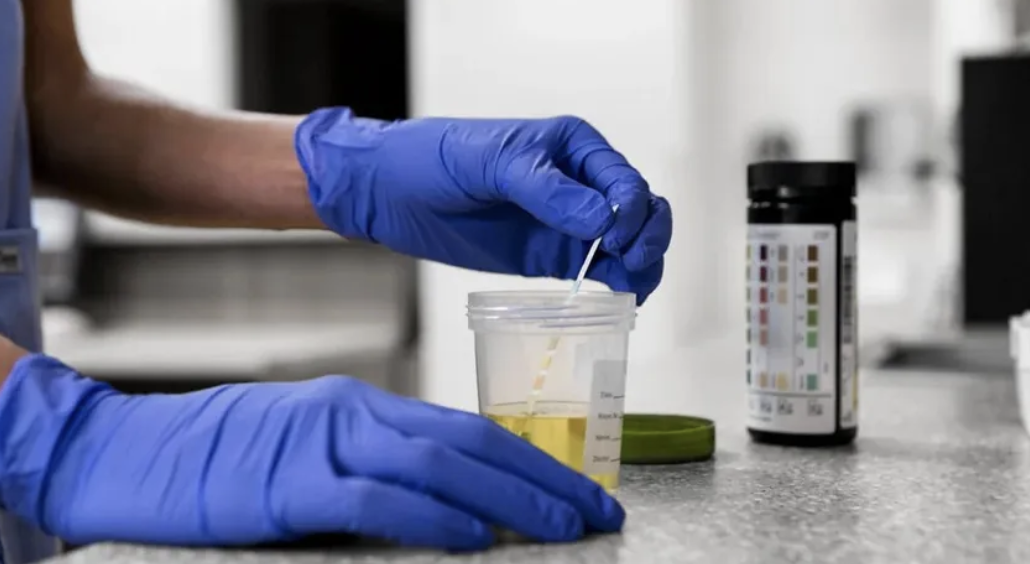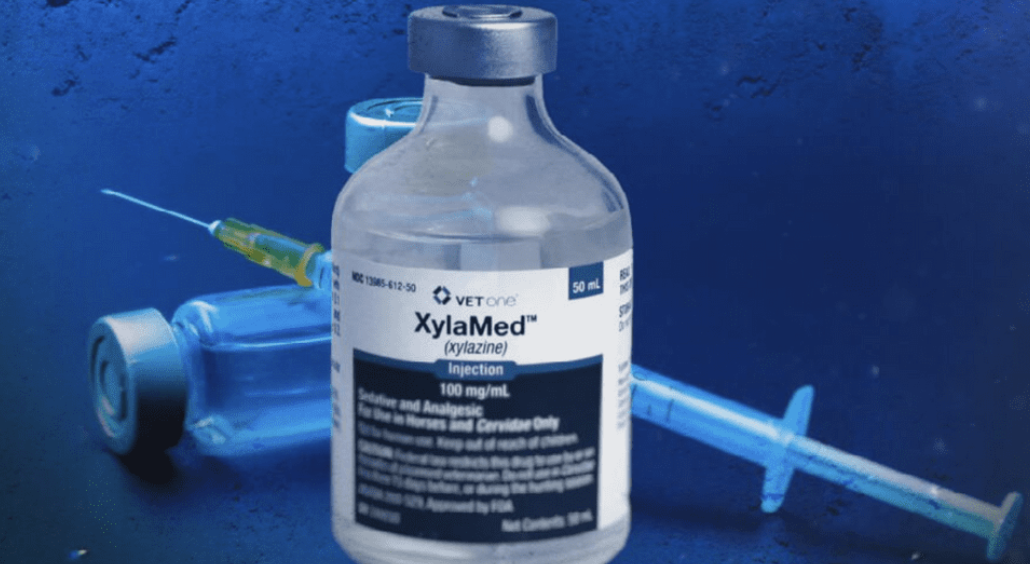Understanding UA testing: what to expect can help you know what to expect. A UA test involves providing a urine sample that is examined to detect health issues or substances. This article covers the purposes of a UA test, the steps during the test, and how to prepare for it.
Key Takeaways
- A UA test is a vital diagnostic tool used to assess various health conditions and is commonly employed for drug screening in employment and treatment settings.
- The accuracy of UA tests exceeds 90%, but several factors, including medications and hydration levels, can influence results, necessitating confirmatory testing.
- Understanding the sample collection process, types of tests, and expected timeframe for results is crucial for effective preparation and interpretation of UA tests.
What is a UA test and why is it done?
A UA test, or urinalysis, is a diagnostic tool used to examine urine and identify various health issues, ranging from urinary tract infections to kidney diseases. Often part of routine urinalysis, urinalysis test helps assess overall health status and monitor chronic conditions such as diabetes. When symptoms like abdominal pain or blood in the urine are present, these tests become crucial for diagnosing underlying medical conditions related to the urinary system, including a complete urinalysis and urine test.
Beyond medical diagnostics, UA tests are also employed for drug screening purposes. Employers and treatment centers frequently use urine drug testing to detect specific substances, ensuring compliance and safety.
Whether ordered by doctors, employers, or treatment programs, these versatile tests and other tests provide essential information for various applications, making them a common test and valuable tool for health care professionals in healthcare that may vary based on the medical condition and needs beyond.

What to expect during a UA test
When you arrive for a UA test, the process typically starts with check-in and verification of your identity. You’ll be guided through the sample collection process, where you’ll provide a urine sample for analysis. This sample undergoes multiple stages of examination, including a visual check, dipstick testing, and microscopic assessment to identify any abnormalities. These stages help reveal information about recent drug use or your overall health status.
Samples are handled with great care to ensure accuracy and prevent tampering. Proper protocols are followed to maintain the integrity of the sample from collection to analysis.
The subsequent sections will detail the sample collection process and the different environments where UA tests can be conducted, giving you a comprehensive understanding of what to expect.
Sample collection process
Collecting a urine sample involves the clean catch method, which includes the following steps:
- Clean the genital area before starting to finish urinating.
- Begin urinating and catch the middle portion of the urine stream in a sterile container.
- Wash hands and genitals before collection to avoid contaminating the sample.
This method minimizes contamination and ensures the sample’s integrity.
Depending on the test’s purpose, supervision may be required during sample collection to prevent tampering. The urine sample is then collected in a tamper-proof urine cup provided by the test administrator. The sample’s temperature is often checked immediately after collection to ensure it is fresh and hasn’t been substituted.

Types of UA testing environments
UA tests can be conducted in various settings, each with its advantages and protocols. On-site rapid testing is often used in workplaces, treatment facilities, and probation offices for its quick turnaround time. These tests provide immediate results, which are essential for making timely decisions.
Off-site lab testing, on the other hand, is commonly conducted in healthcare provider offices and laboratories. These tests may take longer to produce results but offer a higher degree of accuracy and comprehensive analysis.
In certain scenarios, such as legal cases or specific employment screenings, closely monitored testing environments are employed to prevent tampering and ensure the integrity of the sample, following specific instructions. For example, these measures are crucial in maintaining trust.
Types of UA tests and what they detect
UA tests come in various forms, each designed to detect specific substances or health conditions:
- Standard urine tests, such as dipstick tests, can identify the presence of glucose, ketones, proteins, leukocyte esterase, and other substances that indicate metabolic or health issues.
- Microscopic analysis is used to detect bacteria, blood cells, and crystals.
- Urine culture is also used to detect bacteria, blood cells, and crystals, which can point to infections or kidney stones.
Two primary categories of UA tests are drug screening tests and medical diagnostic tests. Drug screening tests are primarily used to detect the presence of substances like alcohol, amphetamines, benzodiazepines, opiates, cocaine, marijuana, and even medications like will suboxone show up in a drug test, depending on the panel used. Medical diagnostic tests help identify health issues such as urinary tract infections, kidney disease, and diabetes through a comprehensive analysis of urine samples.
Drug screening UA tests
Drug screening UA tests are designed to identify the presence of commonly tested substances such as marijuana, cocaine, amphetamines, and opioids. These tests are frequently used in employment settings, legal cases, and treatment programs to ensure compliance and safety. Detection windows for these substances can vary, with some drugs being detectable for several days and others for several weeks, depending on the individual’s metabolism and the substance’s nature.
The process typically involves an initial screening followed by confirmatory testing if the results are positive. Additional testing and confirmatory tests, such as gas chromatography-mass spectrometry (GC-MS), are more precise and help eliminate false positives, ensuring the accuracy of the results.
Medical diagnostic UA tests
Medical diagnostic UA tests go beyond drug detection to assess overall health status and diagnose various conditions. A urine dipstick test can indicate the presence of substances like glucose, protein, and blood, which are significant markers for diagnosing diabetes, kidney disease, and urinary tract infections. Microscopic analysis of urine can reveal crystals, bacteria, and blood cells, providing critical information about potential urinary infections or kidney stones.
These tests can be part of routine health screenings or conducted when symptoms such as frequent or painful urination, abdominal pain, or unexplained fatigue are present in a renal patient. By providing a comprehensive analysis, medical diagnostic UA tests help healthcare providers make informed decisions about further investigations or treatments.
How accurate is a UA test?
The accuracy of UA tests is generally high, often exceeding 90% for detecting certain substances. However, factors such as medications, food, or hydration levels can affect the results, leading to false positives or negatives. Confirmatory testing methods like gas chromatography-mass spectrometry (GC-MS) are used to verify initial findings and ensure the reliability of the results.
Laboratories follow stringent protocols to maintain precision and accuracy during the testing process. This includes proper handling and storage of samples, as well as using advanced techniques to detect and quantify the particular substance present in the laboratory of specific substances.
Factors that affect UA test results
Several factors can influence the accuracy of UA test results. Hydration levels at the time of testing can affect the concentration of drugs in urine, potentially leading to diluted results. Medications and dietary supplements can interfere with lab results, sometimes mimicking the presence of illicit substances.
Timing is also crucial, as the detection window for drugs in urine typically ranges from a few days to several weeks after consumption, influenced by the type of substance and individual metabolism. Sample contamination, such as from menstrual blood or vaginal discharge, can impact the reliability of UA test results.

UA test results: what do they mean?
Interpreting UA test results can provide insights into various health issues, from infections and kidney stones to diabetes. The results can be categorized as:
- Positive results: Indicate the presence of substances or abnormalities.
- Negative results: Suggest that no substances or abnormalities were detected.
- Inconclusive results: May require further testing to determine the cause.
Understanding what each result means is crucial for taking the next steps. Abnormal results often necessitate additional diagnostic tests to pinpoint the underlying issue. The following subsections will explain the timeframe for receiving results and what to do after receiving them.
Timeframe for results
UA test results availability varies depending on the complexity of the tests and the testing facility:
- Rapid tests can provide results within minutes, making them ideal for scenarios that require immediate decisions.
- More comprehensive analyses, such as those involving confirmatory testing, may take a few business days to process.
- Generally, UA test results are available within a few hours to a few days.
Knowing the expected timeframe helps manage your expectations and plan any necessary follow-ups. It’s essential to stay in touch with your healthcare provider to discuss the results of your pregnancy checkup once they are available.
Next steps after receiving results
After receiving UA test results, it’s important to:
- Discuss any abnormalities with a healthcare provider for further evaluation or treatment.
- If the results indicate an infection, antibiotics or other treatments may be prescribed.
- In cases of abnormal findings, additional diagnostic tests may be necessary to determine the underlying health issue.
For employment-related tests, positive results might lead to further confirmatory testing or discussions with your employer about the implications. In substance use treatment programs, test results are used to adjust treatment plans and monitor compliance.
UA testing in substance use treatment programs
UA testing plays a vital role in substance use treatment programs, helping to monitor recovery, ensure compliance, and adjust treatment plans. Routine urine analysis helps healthcare providers track the progress of individuals in recovery, often used alongside tools like the understanding the BARC-10 scale for substance use to assess recovery capital.
These tests are essential for maintaining accountability and may even be conducted remotely. See your guide to remote drug testing for how it works in telehealth settings. The following subsection will discuss common protocols in rehab and Medication-Assisted Treatment (MAT) programs.
Common protocols in rehab and MAT programs
In rehab programs, regular drug testing is a standard protocol to verify compliance and deter substance use among participants. Medication-Assisted Treatment (MAT) combines medications with behavioral therapies to treat conditions like opioid addiction effectively and sustainably.
Testing frequency varies, but it often involves both observed and unobserved collections to maintain integrity. Reporting processes ensure that test results are communicated promptly to healthcare providers for any necessary adjustments to the treatment plan.
Legal and employment use of UA testing
In legal settings, UA testing is used to monitor individuals on probation or parole, ensuring they adhere to the terms of their release. It’s also used in child custody cases to assess parental fitness. Employers implement urine drug testing as part of their hiring process to maintain a drug-free workplace and ensure employee safety, particularly in safety-sensitive positions.
These tests help create safe environments and comply with regulatory requirements. The next subsection will cover your rights and consent when undergoing UA testing.
Your rights and consent
Consent and privacy are critical aspects of UA testing. Key points include:
- Patients must be informed and give explicit consent before undergoing any form of drug testing, including urine tests.
- Employers must obtain written consent from employees before conducting drug tests.
- Written consent grants permission for both the test and for results to be shared with the employer.
It is essential to understand your rights regarding drug testing, including the right to refuse. However, refusal can lead to termination or loss of unemployment benefits in many states. Clear information regarding the purpose of drug tests must be provided to ensure that consent forms are appropriately tailored.
How UA compares to other drug tests (blood, saliva, hair)
Different types of drug tests have distinct characteristics:
- Urine tests are less invasive compared to blood tests, making them a preferred option for many testing situations.
- Saliva tests generally provide a shorter detection window for drugs.
- Urine tests have a longer detection window, making them more effective for identifying drug use over time.
- Hair tests can detect drug use over several months but are less commonly used due to higher costs and potential privacy concerns.
Each type of test has its unique advantages:
- Blood tests are often used when immediate drug levels need to be assessed.
- Urine tests are commonly used for screening due to their balance of invasiveness and effectiveness.
- Oral fluid tests are less invasive and may be preferred in situations like roadside testing, despite their lower detection rates for certain drugs.
How to prepare for a UA test
Preparing for a UA test strip involves several key steps to ensure accurate results:
- Schedule your appointment in advance to reduce wait times and ensure a smoother process.
- Bring a valid government-issued ID for identification purposes.
- Be prepared to empty your pockets and remove outer clothing to maintain the test’s integrity.
Avoid any medications that may affect test results and disclose any prescriptions you are taking to the collector. Restrooms used for urine collection are typically modified to prevent cheating, including using water with a dye and securing water sources.
It’s advisable not to bring personal items like bags or purses into the restroom during collection.
Bottom Line: Understanding UA testing
Understanding UA testing is crucial for anyone undergoing the process, whether for medical, legal, or employment reasons. From the initial sample collection to interpreting the results, being well-informed can alleviate anxiety and ensure accurate outcomes. UA tests are versatile tools used for drug screening, diagnosing medical conditions, and monitoring chronic diseases.
By following proper preparation steps and understanding your rights, you can approach UA testing with confidence. Remember, accurate results depend on several factors, including sample integrity and adherence to protocols. Stay informed, ask questions, and consult with healthcare professionals to make the most of your UA testing experience.
FAQs about UA testing
Can I fail a UA test due to secondhand smoke?
You typically cannot fail a UA test due to secondhand smoke, as the levels of substances from such exposure are generally too low to be detected in standard urine tests.
How long do drugs stay in urine?
Drugs can remain detectable in urine for a few days to several weeks, depending on the substance and the individual's metabolism. It is crucial to consider these factors when discussing drug testing outcomes.
What if I can't urinate during the test?
If you cannot urinate during the test, you may be instructed to drink water and wait, or you might need to return later. Additionally, alternative testing methods may be available.
Are there any foods or medications that can cause a false positive?
Certain foods, such as poppy seeds, and specific medications may lead to what causes false positives on urine tests, making confirmatory testing crucial. It is advisable to undergo confirmatory testing to validate initial results and mitigate these discrepancies.
How is privacy maintained during a UA test?
Privacy during a UA test is ensured by implementing proper consent procedures, maintaining secure testing environments, and adhering strictly to HIPAA regulations. This approach safeguards the confidentiality of individuals' information.
















